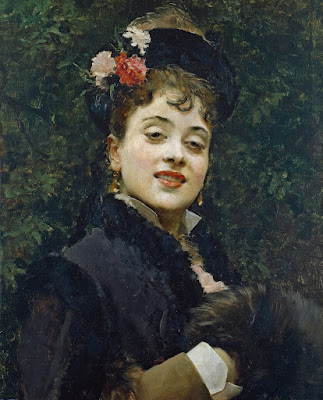- Get link
- X
- Other Apps
 |
| Velázquez: The Surrender at Breda 1635 |
I came to Madrid because I saw a Goya portrait in the Louvre, and wanted to see more. The Prado had dozens (probably hundreds) of Goya’s. And Velázquez. And Rubens, Van Dyck, Titian, Bosch, Brueghel (Jan, Pieter, older, younger.) Not to mention Rembrandt (some of which I saw at the Rijksmuseum in Amsterdam where they are on loan.)
If you’re wondering why so much from the Low Countries, remember that Spain ruled a goodly part of the Netherlands for 150 years. They must have developed a taste.
They’re the big names. There are many others that don’t make it into the coffee table books, especially when it comes to the religious and historic stuff which the Spanish seem to have been particularly keen on. Not surprising, really. It’s still a very religious country, and they delight in dressing up in military costume old and new. There were chaps in doublet and hose with capes all over the place this evening when I walked around the squares. They might have been masons or something.
I spent the day in the Prado. It’s not exactly a delicate construction. The architecture is pretty muscular. More like a British bank than the home of the nation’s culture. Still, it’s what’s inside that counts.
I started with a stroll past a vast sweep of Gothic and Renaissance works, mostly on a grand scale. There’s a Caravaggio - one of his versions of David with the Head of Goliath. It’s in a room surrounded by works by Spanish artists who were (according to the written commentary) greatly influenced by the Italian. It’s not hard to see as much in the paintings. Lots of brutal imagery, with muscles upon muscles and variously severed limbs.
 |
| Caravaggio: David With the Head of Goliath 1600 |
I worked my way along to room after room of Velázquez doing his thing (never as nicely as Rembrandt, I think) and then some striking still life's, especially focussed on floral arrangements (very Spanish, apparently.) Eventually I hit the first of the Goya collection - his court paintings and images of rural life. Good, but not so good as to stand out from his peers. Rubens was next. I never expected to see so many. Apparently some of the Philips were big on his work, and could afford to pay his very high rates. I get that Ruben was a very good operator, but you get a bit sick of so many big bottoms and wrinkly bits.
Just like the Louvre, the Prado isn’t very easy to navigate. They seem to organise by period and style, but there are a lot of stairs in the way. I found the next Goya’s two floors up. A huge collection of cartoons he did for tapestries. He simplified his palette, and kept the subject matter suitable for (grand) home decor. It’s interesting to see, but I wanted something a bit more eyeball grabbing. There were some Flemish painters at the other end of that floor (down stairs then upstairs) and some interesting court treasures from France.
After a much needed espresso, I headed for the basement. Where else would you put Goya’s black paintings? I got waylaid by some fabulous alter pieces and triptychs. They went from medieval to Gothic to early Renaissance, with ever more detailed descriptions of heaven and hell. I could almost smell Bosch’s Garden of Earthly Delights around the corner. I was right. I’d always thought Bosch was a complete outlier, but he is contextualised in the Prado. This piece is like a trailer for the Bosch movie:
 |
| Vrancke van der Stockt: Redemption Triptych c. 1459 |
There were other gems, including some Brueghel (I forget which one) and Rubens double acts worth the price of admission, and some images from a 1615 parade in Brussels that would put Where’s Wally in his place.
 |
| Denis van Alsloot: The Festival of the Ommegang in Brussels: the procession of Our Lady of Sablon 1615 |
Finally, Goya’s black paintings. His descent into depression or madness, never intended to be shown. There are one or two which are best left alone, but the majority of the twenty or so canvases are surprisingly captivating. There’s a deep compassion here, and the technique is of an old man who has no need for gimmicks. There’s a lot in common with Rembrandt’s last few years, and Turner too. Every brush stroke seems applied at a distance. There’s no detail, just the sum of an artist’s skills projected onto the canvas. This is as good as art gets - says me.
 |
| Goya: The Dog c: 1823 |
A portrait found me on the way out. Painted by a Spanish artist in Paris. Not hard to see the obvious influences. Beautiful.
 |
| Raimundo de Madrazo: La modelo Aline Masson c. 1876 |
If you want more detail on the pictures, you can see the Google Photos gallery here.
All images public domain
- Get link
- X
- Other Apps